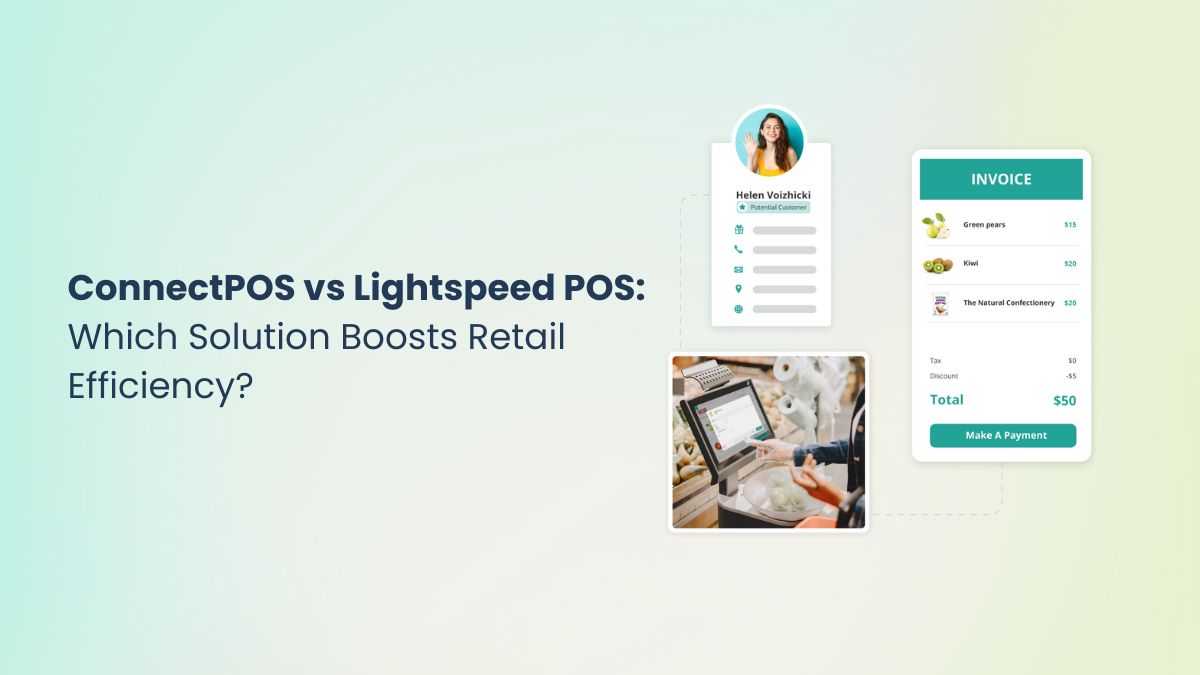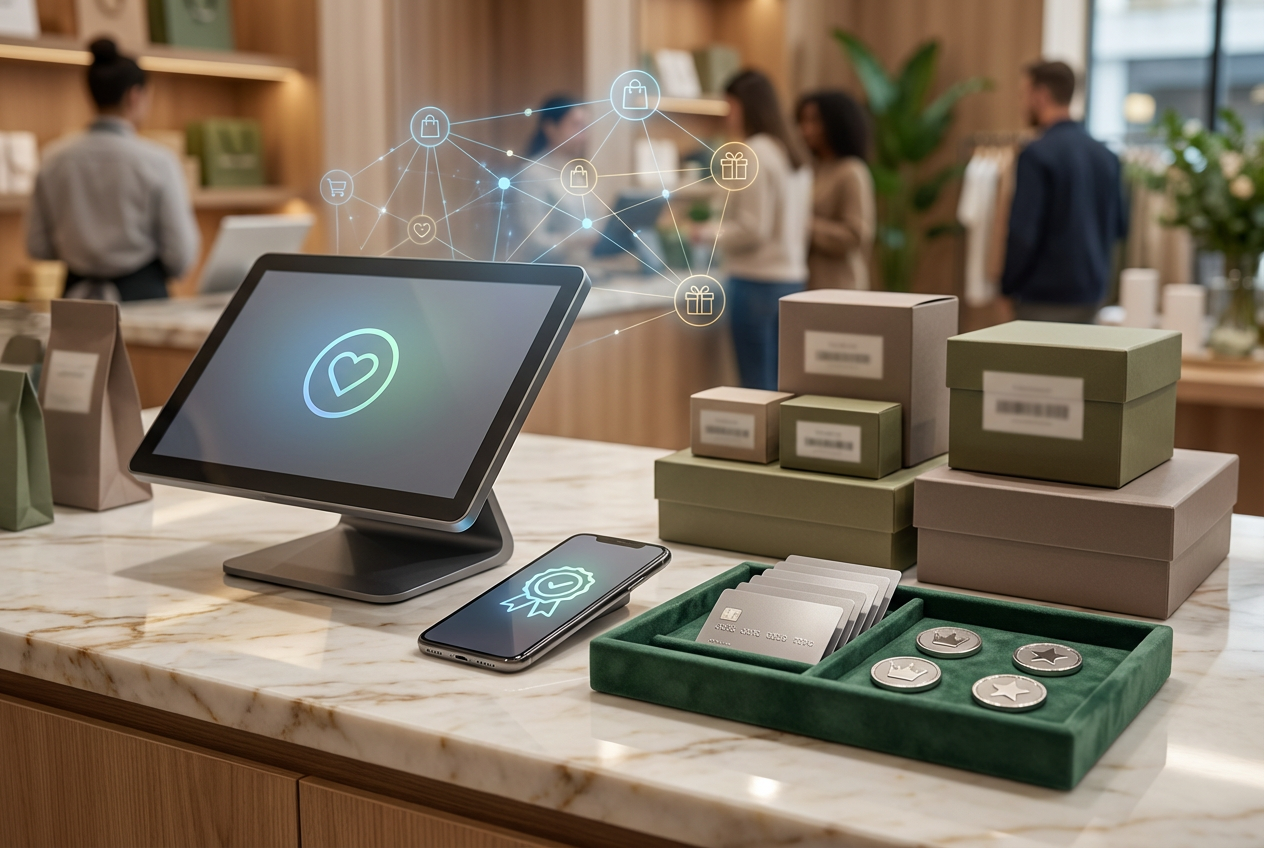Retailers aiming to stay lean, scalable, and competitive in 2025 are looking beyond just basic checkout tools. They need flexible, real-time systems that connect every sales channel, from physical stores to webshops and mobile apps. Two names frequently mentioned in this conversation are ConnectPOS and Lightspeed POS.
Both platforms are known for powering omnichannel operations, but the way they approach flexibility, customization, and scalability differs in meaningful ways. In this breakdown of ConnectPOS vs Lightspeed, we’ll look at what each system offers, how they work in real-world retail environments, and which one might be the better match for your business model.
What is ConnectPOS?
ConnectPOS is a unified cloud-based point of sale system built to support omnichannel retail operations. Originally developed for Magento, it has grown into a multi-platform solution trusted by more than 10,000 businesses, including ASUS, SCG, and Eyewa.
Key Features of ConnectPOS
- Real-time data synchronization across stores, warehouses, and eCommerce platforms
- Multi-store and multi-warehouse management from one dashboard
- Offline mode to sell without internet disruptions
- Split payments, custom discounts, age verification, and custom receipts
- Self-checkout POS and customer-facing displays
- Advanced inventory tools with stock alerts, barcode printing, and purchase order automation
- Integrated with loyalty and promotion tools
- Staff management with role-based permissions and performance tracking
- Integration with 50+ third-party systems – ERP, CRM, shipping, and more
- Support for 20+ global payment gateways with no extra transaction fees
- Mobile POS apps for iOS, Android, and desktop use
Key Industries Served by ConnectPOS
ConnectPOS is designed primarily for retail and offers tailored workflows for:
- Fashion and apparel
- Electronics and accessories
- Furniture and home goods
- CBD and vape
- Firearms and regulated industries
- Grocery and food & beverage
- Health and beauty
- Hobby and toy stores
- Multi-location retail chains
What is Lightspeed POS?
Lightspeed POS is a cloud-based commerce platform that serves retail, restaurant, and golf businesses. With a long-standing presence in the market since 2005, Lightspeed has evolved into a unified solution that brings together POS, payments, inventory, and eCommerce under one roof.
Key Features of Lightspeed POS
- Unified commerce platform combining POS, inventory, payments, CRM, and eCommerce
- Lightspeed Payments (built-in payment gateway with mobile wallet support)
- Advanced inventory tools, including product matrices, vendor catalogs, and reorder points
- Real-time dashboards and advanced analytics
- Built-in loyalty and email marketing tools
- Multi-store and multi-currency support
- Native eCommerce (Lightspeed eCom) with shipping and fulfillment features
- Mobile POS setups with support for iPads and retail hardware
- Staff management with role-based permissions and performance tracking
Key Industries Served by Lightspeed
Lightspeed Retail is best suited for:
►►► Optimal solution set for businesses: Multi store POS, Next-gen POS, Inventory Management Software (MSI), Self Service, Automation, Backorders
- Fashion and general retail
- Sporting goods and bike shops
- Jewelry and accessories
- Home décor and lifestyle
- Pet supplies
- Multi-outlet retailers
- Hospitality and restaurants (via Lightspeed Restaurant)
- Golf courses and pro shops (via Lightspeed Golf)
ConnectPOS vs Lightspeed: A Comprehensive Comparison
Let’s break down the key differences between ConnectPOS vs Lightspeed using five core categories that matter most to retail businesses: features, customization, integration, pricing, and support.
Features
Both ConnectPOS and Lightspeed POS are built for modern retail, offering a wide range of tools that go beyond just processing sales. They support multiple selling environments – brick-and-mortar, online, events, and mobile setups, while centralizing critical workflows like inventory, checkout, customer engagement, and reporting.
ConnectPOS focuses on real-time sync and in-store flexibility. Retailers can process sales even without internet access, manage multiple warehouses, and customize checkout flows to suit different business models. It also includes self-checkout, customer-facing displays, and native loyalty and promotion tools, making it a practical fit for high-volume, multi-location businesses.
Lightspeed, on the other hand, leans into a unified commerce experience. Its built-in tools for payments, loyalty, and eCommerce reduce the need for third-party add-ons. The platform is especially strong in advanced inventory handling, making it ideal for businesses managing complex product catalogs or vendor relationships. However, some of its advanced features, like Lightspeed Payments and Advanced Reporting, are locked behind higher-tier plans.
Here’s a side-by-side breakdown of key feature sets across both platforms:
| Feature | ConnectPOS | Lightspeed POS |
| Checkout Experience | Customizable flows, self-checkout, offline mode | Streamlined checkout, native payment tools |
| Inventory Management | Real-time sync, multi-warehouse, barcode printing | Product matrices, reorder points, vendor catalogs |
| Loyalty & Promotions | Integrated rewards, store credit, flexible discounts | Loyalty program, marketing campaigns |
| eCommerce & Omnichannel | Shopify, Magento, WooCommerce, BigCommerce, commercetools | Lightspeed eCom, marketplace integrations |
| Reporting & Analytics | Custom reports, real-time dashboards | Advanced analytics (in higher-tier plans) |
Customization
This is where ConnectPOS stands out. Retailers can request personalized changes to fit their specific needs, whether it’s a custom checkout flow, unique tax calculations, or integrating with niche platforms. The platform is also more flexible in how it connects with third-party tools.
Lightspeed POS does offer solid role-based access and store-level configurations, but it leans toward a plug-and-play model with fewer deep customization options.
Integration
ConnectPOS integrates with more than 50 third-party systems across ERP, CRM, accounting, payments, and logistics. It works with major platforms like Shopify, WooCommerce, Magento, BigCommerce, and Commercetools, plus a long list of payment gateways including Stripe, Authorize.net, and PayPal—with no extra charges.
Lightspeed POS supports integrations too, but prioritizes its native tools like Lightspeed Payments, Loyalty, and eCom. External payment options are available but may come with additional fees.
Pricing
Pricing is often a deciding factor, especially for growing businesses.
ConnectPOS starts at $49/month per register, with no extra charge for using your preferred payment providers. You can view more plans on the Pricing page.
Lightspeed POS starts at $119/month per register, and may include added costs for third-party integrations or payment processing outside Lightspeed Payments.
Customer Support
Both platforms provide global support, but ConnectPOS offers 24/7 live chat, phone, and email assistance, along with onboarding and training resources. Their support team is known for quick response times and retail-specific expertise.
Lightspeed POS offers support via phone and email during business hours, along with a knowledge base and training resources. However, 24/7 live support is not standard across all plans.
ConnectPOS and Lightspeed POS: Which POS System Works Best for You?
Choosing between ConnectPOS and Lightspeed POS depends on your business structure, goals, and how much control you want over your retail tech stack. To make the right decision, ask yourself:
- Do you prefer a flexible system that adapts to your existing platforms, or a full ecosystem that comes pre-integrated?
- Will your staff need mobile POS, offline mode, or self-checkout options?
- How complex is your inventory – do you manage multiple warehouses or product variations?
- Are you looking for built-in tools for loyalty and promotions, or do you already use third-party apps for those?
- What’s your preference when it comes to payments – freedom to choose providers, or native processing?
Then look at ConnectPOS and Lightspeed POS:
ConnectPOS is a strong match for retailers who want a customizable, scalable system that integrates easily with their existing platforms. It’s also ideal for multi-store businesses and those in niche sectors like firearms, CBD, or high-traffic retail environments.
Lightspeed POS is better suited for mid-to-large retailers that want a unified commerce system with built-in payments, eCommerce, and marketing tools—especially those seeking a plug-and-play solution with minimal setup.
Final Words
ConnectPOS and Lightspeed POS can be the perfect candidates for business owners seeking a comprehensive omnichannel solution. Sharing multiple similarities, yet each system delivers a different experience for users. ConnectPOS provides more flexibility, real-time control, and compatibility across devices and platforms, while Lightspeed POS leans toward a pre-built ecosystem with native tools. When comparing ConnectPOS vs Lightspeed POS, the better fit depends on how much customization and scalability your business is ready for.
If you are still hesitating, why not contact ConnectPOS for a consultation? Prioritizing your needs and values, we can help you transform your business and bring your vision to reality. Put your trust in the hand of the omnichannel power behind ASUS, SCG, and SeedCo!
►►► Optimal solution set for businesses: Shopify POS, Magento POS, BigCommerce POS, WooCommerce POS, NetSuite POS, E-Commerce POS



